Old Town Club in Winston-Salem, NC is a 1939 Perry Maxwell original bordering the campus of Wake Forest University. I had the great pleasure of playing several rounds at OTC on a perfect early-November day at the kind invitation of GCAer Will Spivey. And while I am a few months late in getting this tour together, OTC's recent near-miss on garnering the threshold number of Golf Digest rater plays necessary for inclusion in the Top-100 make this a particularly appropriate to shine a bit of a spotlight on this architectural gem.
Old Town Club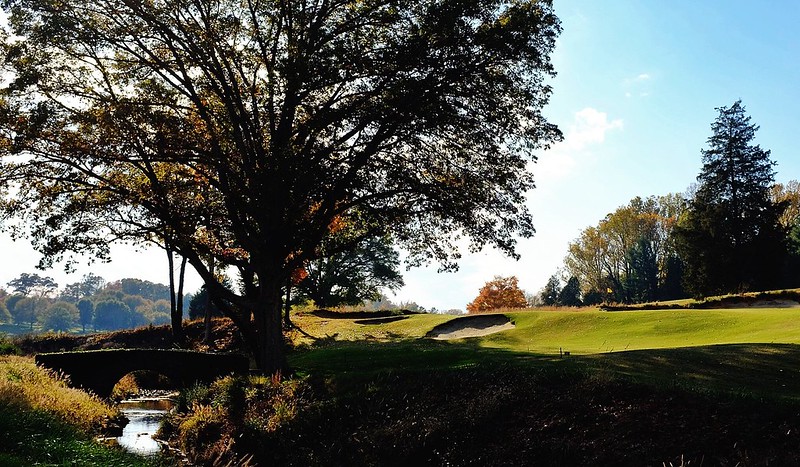
When it became apparent that time had taken its toll on this old beauty, the members and their Golf Chairman, Dunlop White, chose Coore & Crenshaw to perform an extensive restoration of the property. For a more detailed discussion of this process and the work performed by Coore & Crenshaw, be sure to check out Ran's excellent profile at
http://golfclubatlas.com/courses-by-country/usa/old-town-club/ . Suffice it to say, the duo did a magnificent job.
Late Afternoon at Old Town
Before we begin, a few notes about OTC and these photos. I was told, on good authority, by members of OTC and by Dunlop White, that the absolute peak time of year to play the course is November/December. I certainly cannot disagree. OTC played firm and fast throughout, and given the exceptional green- and green-side features, this made for some very exciting golf. OTC is not built for lush, soft, ultra-green conditions. My first round of the day was played during a persistent light rain under continual cloud cover, and the course stayed firm as ever. After a quick lunch, the sun came out, dried the course immediately and put an entirely new look on the course. So, while these photos were all taken on the same day, you may notice differences based on the time of day that a particular photo was taken.
The Spectacular 8th/17th Double Green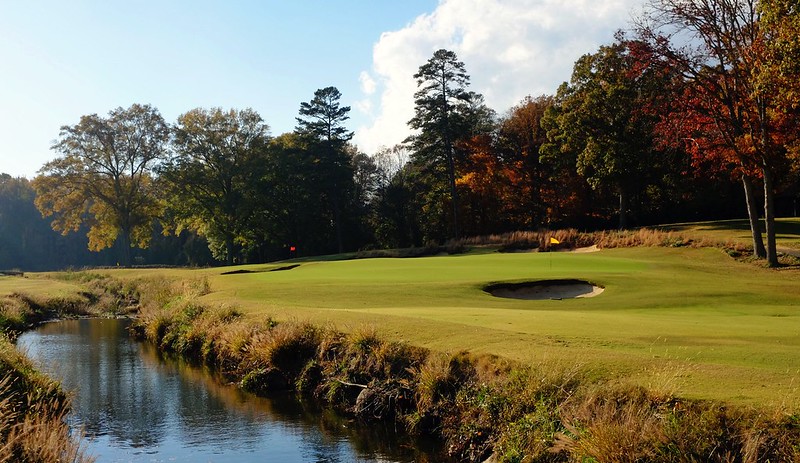
I hope you enjoy the tour.
Old Town Club
At a macro level, Old Town Club has a few standout architectural features that demand mention at the outset. The first is the routing. The first thing that GCA aficionados seem to talk about when they talk about Old Town is Maxwell's brilliant routing of the golf course. To me, the routing of a golf course has always seemed equal parts engineering discipline, artistic ability and black magic -- I've never quite been able to grasp how it's done, much less done well. But when it's done well, I know it when I see it. And OTC is it. Maxwell's routing begins a three hole loop to the south of the club house in a Par 4, Par 3, Par 4 arrangement. The members must love this feature. Beginning with the 4th hole, the course meanders up, over and a round various landforms and features such that no two holes play similarly, no part of the walk is too steep, and never is there a hint of boredom.
The 17th, 8th and 9th Holes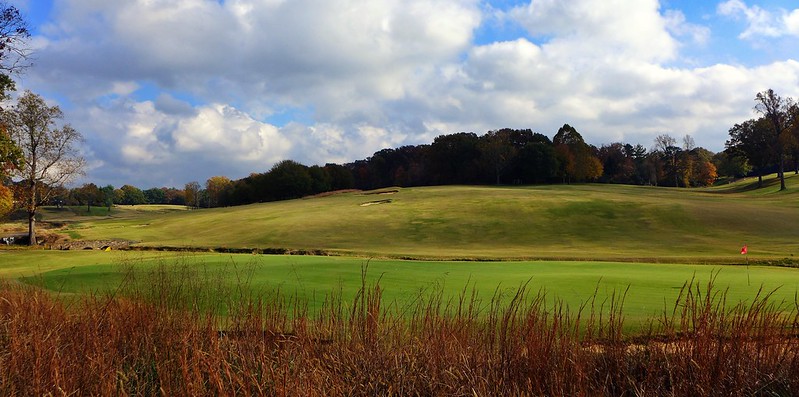
The second feature is the openness of the property and the way the golf course uses that openness to bolster the way the course plays. Bill Coore, Ben Crenshaw and Dunlop White deserve great credit for this feature. From the first tee, the player can view most of the three hole starting loop. From the crest of the fourth fairway, more than half the course (and its wonderful landforms) are in full view. And from the double green at 8/17, the player can look back and see four connected fairways -- the 17th, the 8th, the 9th and the 18th -- quite an amazing sight. Coupled with the minimal use of encroaching rough, the openness of the course provides for a wide array of options on every hole (in fact, the rough is so minimal, it is possible to walk up 4, across 7, up 17, across 8, across 9 and up 10 back to the clubhouse without every stepping on a line of long grass).
From the 4th Fairway The Clubhouse
The ClubhouseOld Town's gorgeous brick clubhouse fits in perfectly with the rest of its surrounds. The fried chicken special on the lunch menu is spectacular.
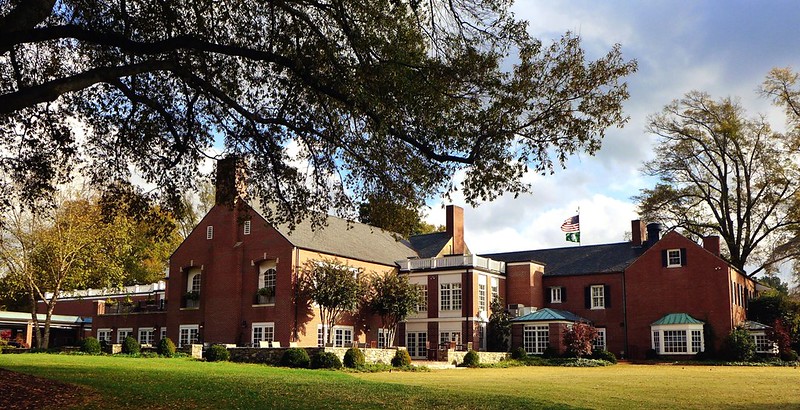 Hole 1 - Par 4 - 407yds
Hole 1 - Par 4 - 407ydsA round at Old Town begins on the first tee in the shadow of the clubhouse, looking out at the generous first fairway, which disappears from view down into a valley before rising to meet the green.

Often, players will face an uphill shot from a downhill lie into the first green.
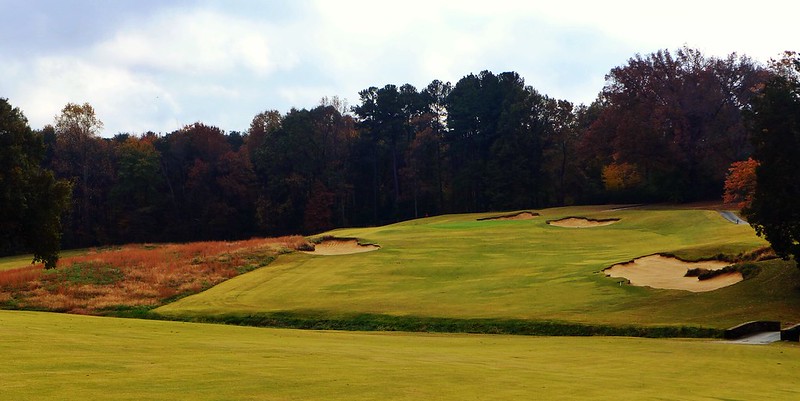
Though the first green looks inviting, it has serious teeth. The false front is visible in this photo, as it the abrupt falloff to the left of the green. Indifferent approaches can land on this green and still end up 15 yards from the putting surface.
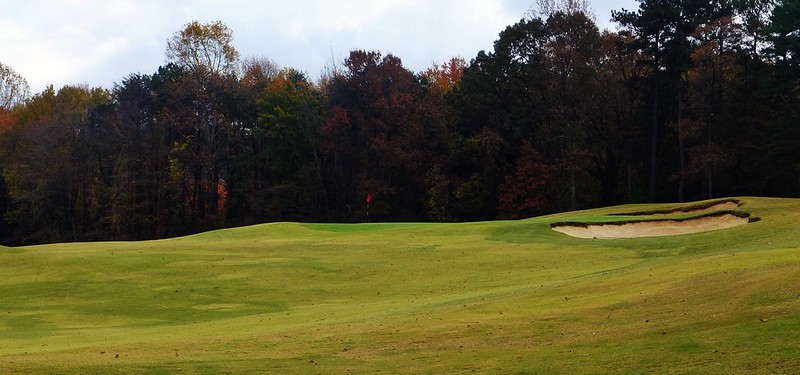
The view back down the 1st hole, illustrating the rolling terrain and the spaciousness of the first fairway.
 Hole 2 - Par 3 - 145yds
Hole 2 - Par 3 - 145ydsA short par 3 that has been beautifully reworked by Coore & Crenshaw, the second plays slightly downhill over the same small creek that bisects the first fairway.

The second green is wide, shallow and full of undulation.
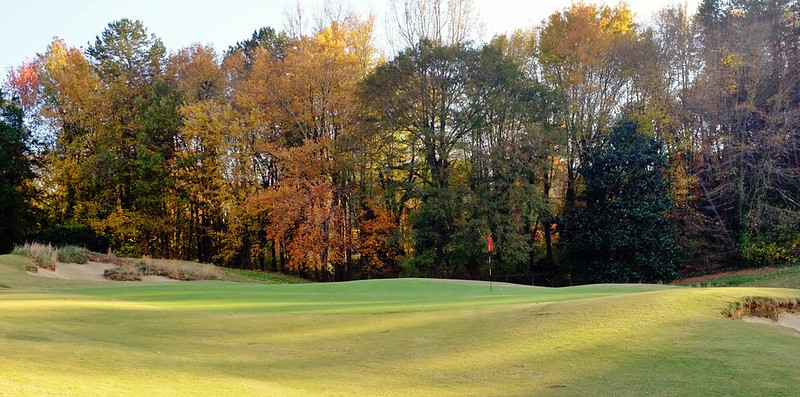
This view from behind the second green reveals some of the terrific available pin positions on this hole.
 Hole 3 - Par 4 - 361yds
Hole 3 - Par 4 - 361ydsThe third hole plays back toward the clubhouse and ends the opening three-hole loop. From the tee, the player sees only the flagstick and the looming bunker planted high on the right shoulder of the fairway.
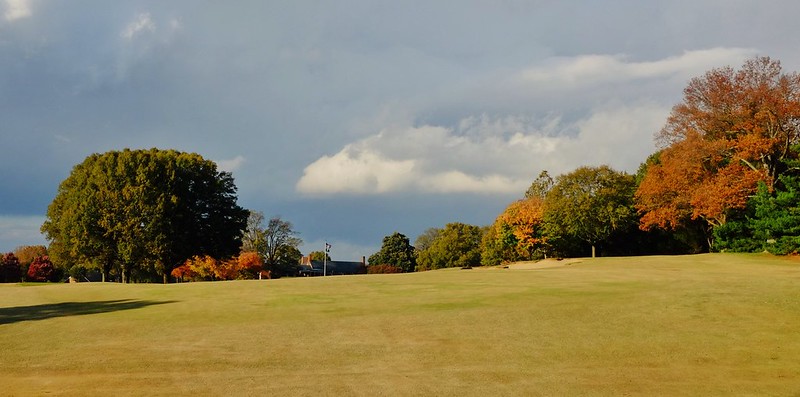
Cresting the hill reveals the low-left bunker, which, due to the firm and fast conditions and the slope of the fairway, plays much larger than its actual footprint.
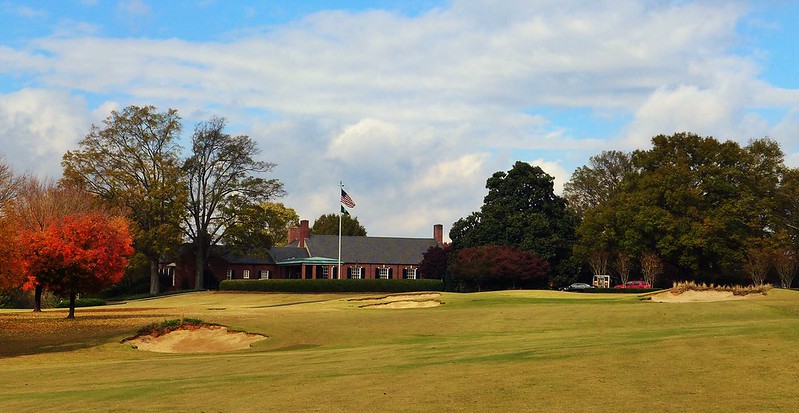
This view from behind the third reveals the internal mounding and the importance of being on the proper tier of the green.
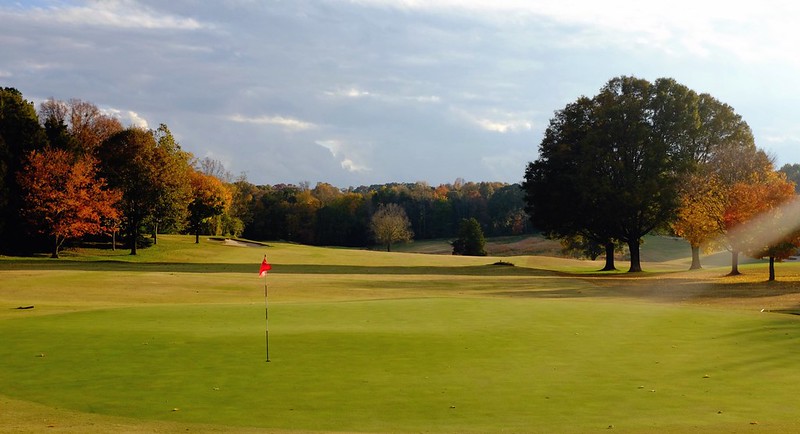 Hole 4 - Par 5 - 520yards
Hole 4 - Par 5 - 520yardsA quick walk past the clubhouse and down a small pathway brings the golfer to the fourth tee. The remaining 15 holes at Old Town are laid out on the northern side of the clubhouse. The first par 5 on the course, the fourth hole becomes reachable with a well struck tee shot, as any ball that clears the crest of the hill will bound past the trees at the corner of the dogleg. For longer hitters, however, this is one of the tighter tee shots on the golf course.
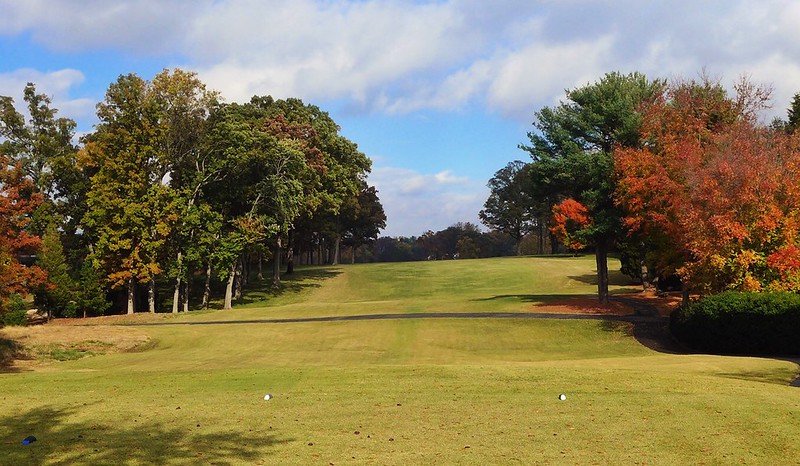
After reaching the crest of the hill, the course opens up to the golfer. The hole itself doglegs right and follows the tree line down the hill.

Those who don't (or, like me, can't) reach the green in two face either a short, sharply downhill approach or a half-wedge from the bottom of the hill into the third green.
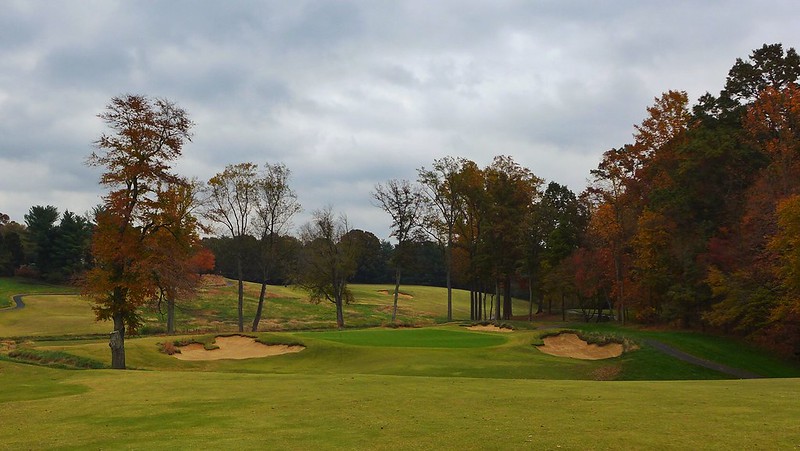
This view from the right side of the fourth green reveals the wonderfully nuanced putting surface.
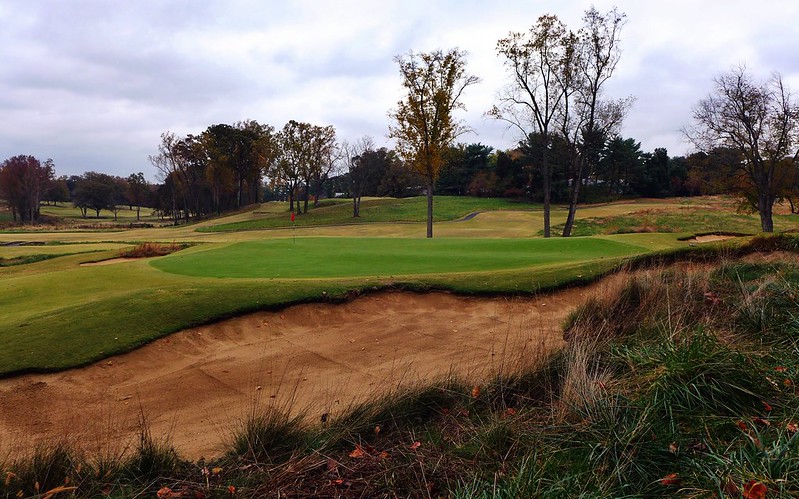
This view from the right rear portion of the fourth green shows both the fairway's long decent and the expansive nature of the property.
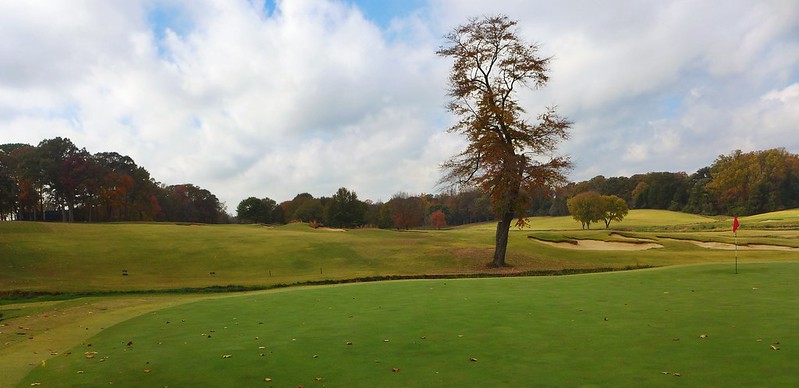 Hole 5 - 354yds - Par 4
Hole 5 - 354yds - Par 4The fourth tee is carved into a sheltered nook on the side of a hill. The sixth green is visible to the left. A perfect draw will shorten this hole considerably, as it is possible to carry the bunkers set in the inside corner of the dogleg. Another tee shot with a variety of options for the player.

The fifth green is benched into a small hill at a far corner of the property. This green slopes substantially from high left rear to low right front, making accuracy critical on this short approach.
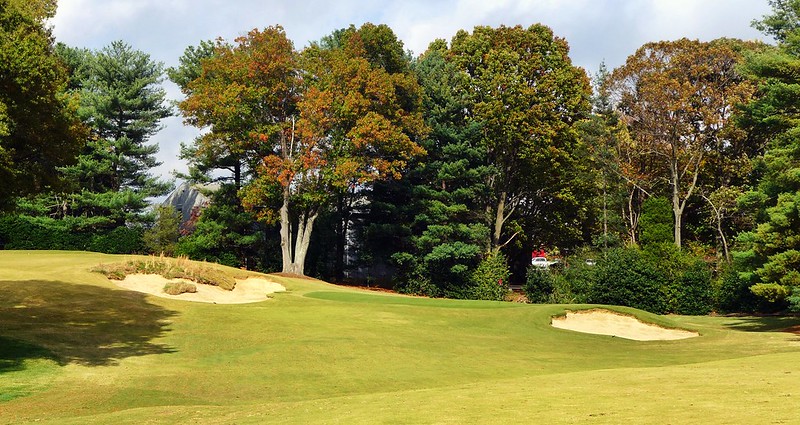
This view from behind the fifth green shows the contour of the fairway and the steepness of this green. The sun is providing a helpful spotlight on the area from which you do not want to be putting at today's hole.
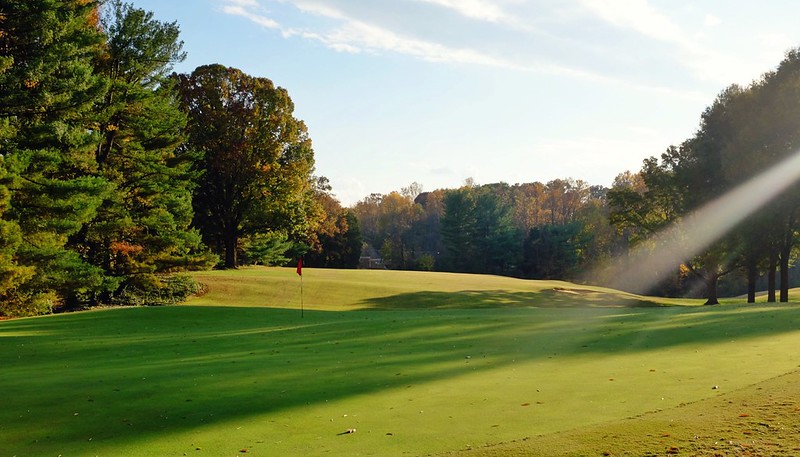 Hole 6 - Par 3 - 173 yards
Hole 6 - Par 3 - 173 yardsThe beautiful sixth hole plays back toward the fifth tee. This hole offers a clinic in visual deception. From the tee, large bunker on the right looks to be greenside, but in fact there are forty-plus yards between its back edge and the putting surface. Add to that a horizon green with no landmarks between it and the far hillside and a green that falls away dramatically on all sides and the player is confronted with a fun puzzle. Long or left is no picnic.
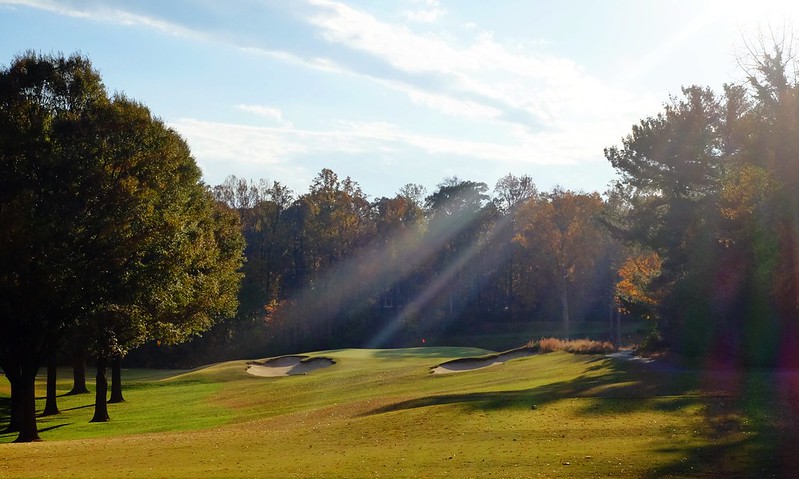
The view from the sixth green is one of the prettiest on the golf course. No fewer than half the holes on the golf course are at least partially in view from here.
 Hole 7 - Par 4 - 340yds
Hole 7 - Par 4 - 340ydsOnce more, the player is confronted with options off the tee. Challenge the bunkers on the left and have a better angle and a flatter lie into the tiny seventh green, or bail out to the ample fairway to the right and face a more uphill second from a less favorable angle? A gorgeous, fun hole.
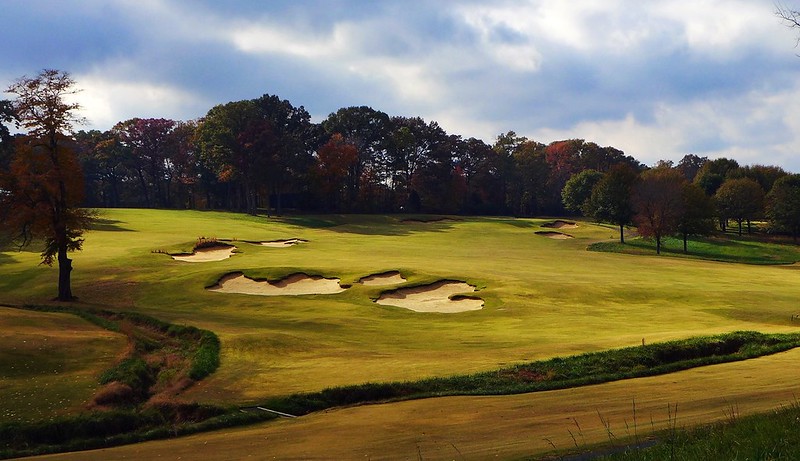
The approach to the seventh green, seen here through the morning raindrops, presents one of the more difficult short shots on the golf course. In addition to the small green, the player must contend with a long bunker running along the high side of the green (no easy task getting up and down from there) and more bunkers and a falloff to the right.
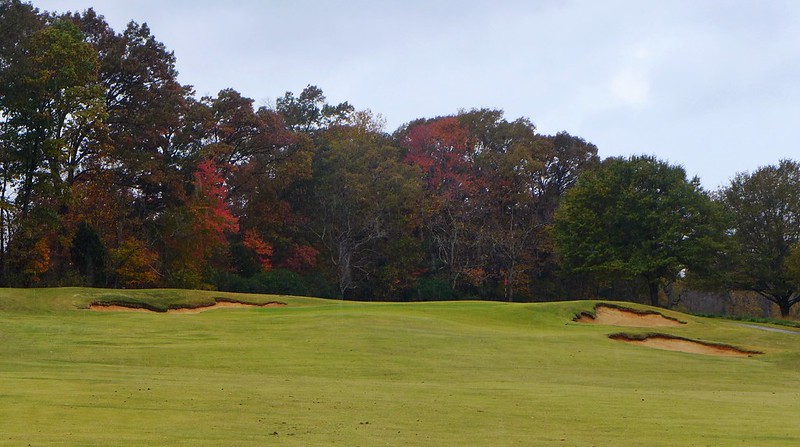
The view back down the seventh hole.
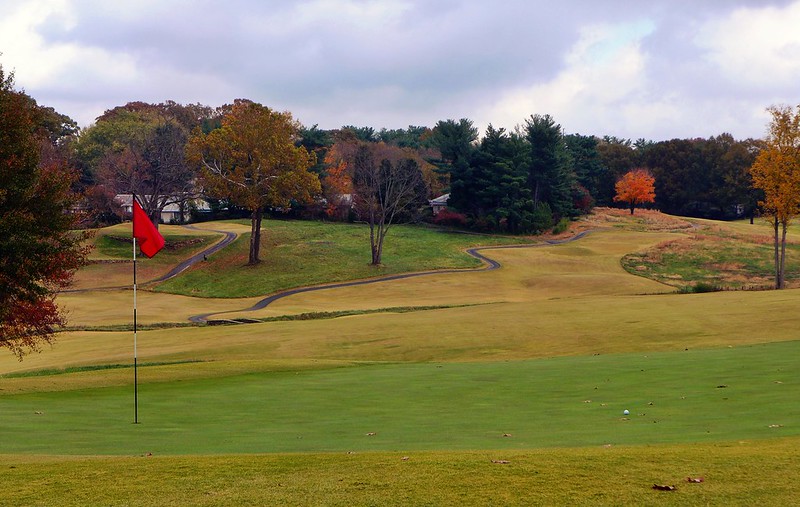 Hole 8 - Par 4 - 358yds
Hole 8 - Par 4 - 358ydsThe tee shot on the eighth hole is blind to the player, as the fairway drops out of view past the first bunker. Like Lanny Wadkins was fond of saying, the dome and steeple of the Wake Forest library provides an aiming point (barely visible in this photo at the tree line above the bunker).

Reaching the crest of the eighth fairway provides one of the most thrilling views at Old Town - the downhill approach to the immense green shared by the eighth and seventeenth holes. The eighth plays to the red flag on the left. An absolutely exceptional use of a double green, and a truly special feature of this golf course.
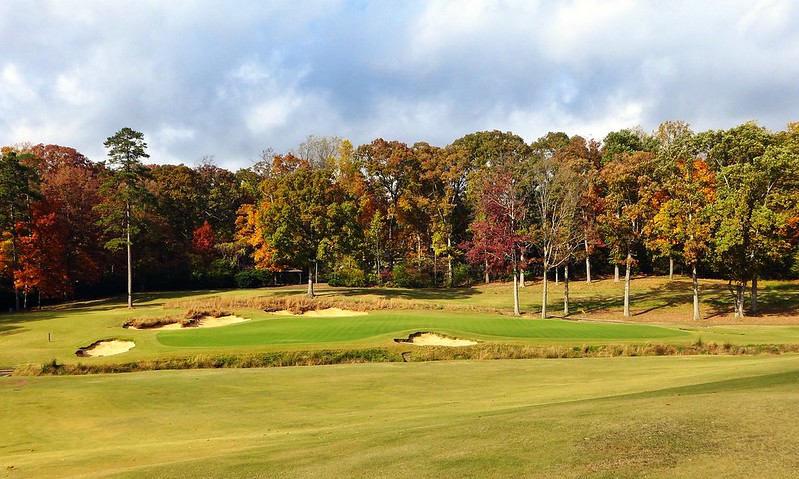
This view from the left side of the double green shows just how much contour this massive green contains. The two pins are about 200 feet apart. The high point of the green is in the middle, and each side has plenty of interest of its own. During our round, Will was faced with a nearly 100 foot putt from the high rear portion of this green -- his picture perfect putt hit the hole and somehow lipped out.

From behind the double green, the player is presented with a panoramic view of the seventeenth, eighth, ninth and eighteenth (out of frame to the right) fairways, each of which join together to create a swath of fairway several hundred yards wide. Quite a sight.
 Hole 9 - Par 4 - 360yds
Hole 9 - Par 4 - 360ydsIn sticking with the shared theme, the ninth and eighteenth holes share a tee box, with a directional stone pointing the golfer in the right direction. Both holes play back toward the clubhouse.
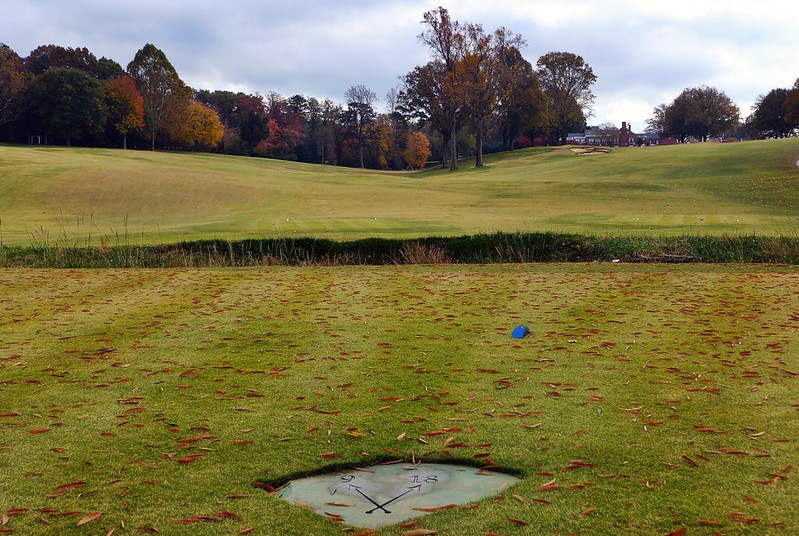
The refreshing openness of Old Town is felt during the walk up the shared eighth and ninth fairways.

The ninth doglegs right around the trees, with the sharply banked fairway and firm conditions helping to scoot the well struck tee shot around the corner and into a position from where the green can be reached. On the flip side, not many level lies are to be found on the ninth, making the approach to an elevated green more difficult.
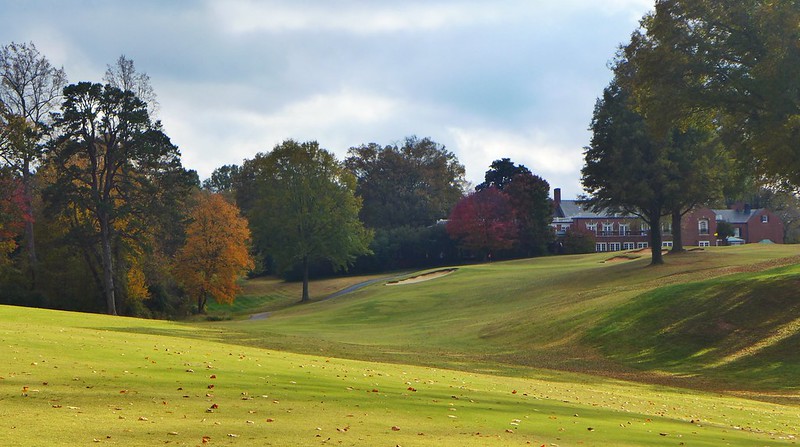
The view back down the beautifully natural ninth hole (one of my favorites at Old Town).

(Tour continued below due to character limit).